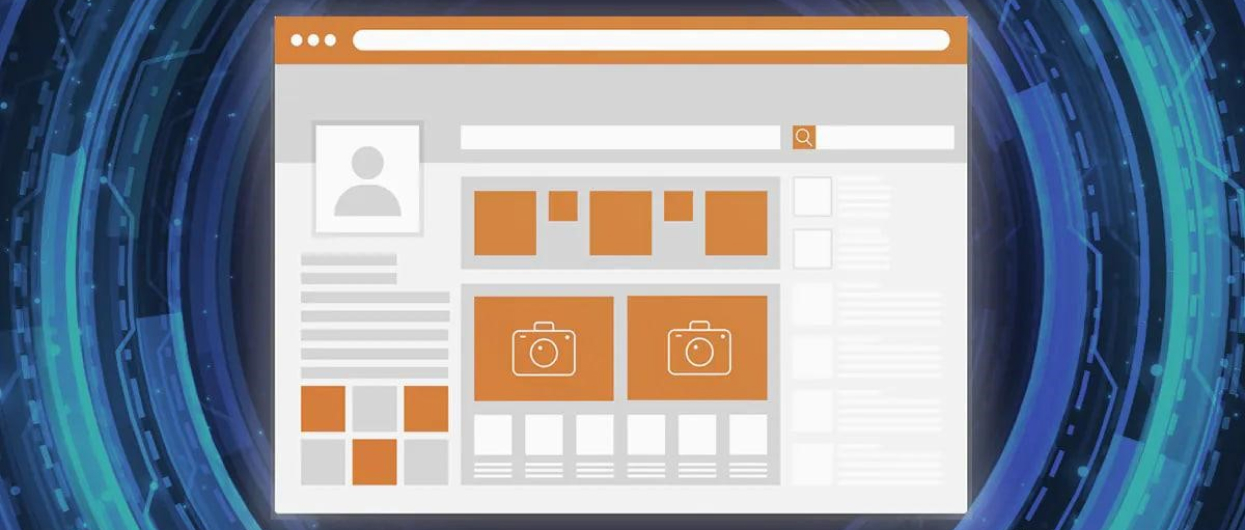
The online dimension of our world keeps extending its limits, making businesses look for cutting-edge solutions when targeting their performance. As long as the majority of business operations are performed through various applications, platforms, and instruments, it is important to have a solution that unifies all the tools under a single point of access. Such a solution is called a web portal, and it aims to mitigate all the difficulties the business may encounter while uniting numerous data and content.
Let’s look into the types of web portals, and clarify how they can benefit the business functioning.
What is a Web Portal?
A web portal is a major dashboard-like starting website, which works as an access point to several different systems. It allows access to user-specific content, data, instruments, and communication tools. Depending on its structure and objective, a web portal aims to simplify the communication process between employees, clients, vendors, and partners.
Considering the business model, web portals can be classified into two major groups:
1. Vertical web portals
The portals are focused on a specific domain and industry, and can be subcategorized into:
- Corporate portals — serve a particular company and provide personalized access to certain information. It is often called an enterprise or a business portal.
- Commerce portals — serve B2B and B2C business models are created to support operations between the sides.
- Knowledge portals — provide information regarding the workflow within the company.
2. Horizontal web portals
Horizontals aim to satisfy a variety of topics and interests and are often called “mega portals.” They collect and present information from different sources across the network.
Aiming to create a web portal that will fit the ideas of business, it is always worth consulting the professionals, as they can help choose the best-fitting form.
Also read: The 15 Best E-Commerce Marketing ToolsHow to Create a Web Portal?
A web portal is the backbone of the company’s functioning, as it takes all the communication and operations within the company to a new level. The success of its performance depends on the clearly outlined goals of the business and the level of expertise of the developing company. When you hire software developers, make sure they have an end-to-end portfolio, with a proven track record in web portal development.
Pre-production Stage
1. Define the aim
The final product and its functions will make the foundation of the project roadmap, as it ensures that the whole team of designers, developers, and managers follow the same strategy.
When outlining the goals of the web portal, it is recommended to follow the SMART principle to ensure they are specific, measurable, achievable, relevant, and time-bound. Such an approach will provide clear and realistic goals, which are easier to achieve.
2. Integration
Aiming to create a unified user experience, the web portal should be seamlessly integrated with systems like CRM (customer relationship management), ERP (enterprise resource planning), or an e-commerce platform. It is important to consider all the integrations in the planning stage.
3. User experience design
UX design is responsible for creating a user-friendly experience ensuring all the interactions are performed intuitively, with a high level of responsiveness.
Also read: Top 10 Programming Languages for Kids to learn4. The MVP
A Мinimally Viable Product, or MVP, is a prototype of a fully functioning project, which contains all the basic functions and features of the product. It allows the business to see if all the planned features and functionalities will be well accepted by the users. After collecting constructive feedback from the early adopters, the team of developers can make amendments to the project roadmap.
Production stage
1. Development
The most responsible part of web portal creation, which makes all the bits and pieces come alive. The front-end developer will create the visual side of the web portal, while the back-end expert will create APIs to integrate the database with the front end.
The development of web portals includes the usage of various tools like:
- Databases (MySQL, NoSQL),
- Cloud platforms (AWS),
- CMS – WordPress, Salesforce, Magento),
- Back-end and front-end frameworks.
2. Testing
Testing is a crucial step before letting the web portal go public. It helps to verify its quality and functionality and identify the issues, bugs, and vulnerabilities.
Also read: Top 3 Lessons I Learned from Growing a $100K+ Business3. Deployment
The web portal is delivered to the users.
Post-Production Stage
The post-production stage is directed towards maintaining proper web portal functioning, and further development of its functionalities.
The Bottom Line
A web portal is an informational hub and source of multifunctional content. It is one of the best web solutions to target the efficiency of business performance. A successful web portal is the right idea built on a sequence of carefully planned iterations, and a well-executed development. Don’t hesitate to open your own portal to information and improve your company’s functioning.
Top 10 News
-
01
10 Best AI Image Enhancer & Upscaler Tools (100% Workin...
Monday October 2, 2023
-
02
10 Best AI Text To Speech Generator (October 2023)
Wednesday September 20, 2023
-
03
10 Best AI Video Generators In 2023 (Free & Paid)
Wednesday September 20, 2023
-
04
10 Best AI Voice Generators In 2023 (Free & Paid)
Friday September 15, 2023
-
05
10 Best Free QR Code Generators in 2023
Monday July 24, 2023
-
06
Top 10 Mental Health Apps For 2023
Friday July 14, 2023
-
07
Being Online: Top 10 Benefits Of Online Banking
Friday May 12, 2023
-
08
Top 10 Essential Tools for Boosting Productivity in Flutter ...
Tuesday March 7, 2023
-
09
10 New & Trusted Z-Library Alternatives (Explore Ebooks...
Thursday February 2, 2023
-
10
10 Amazing Uses For Solar Energy At Home
Thursday January 12, 2023






